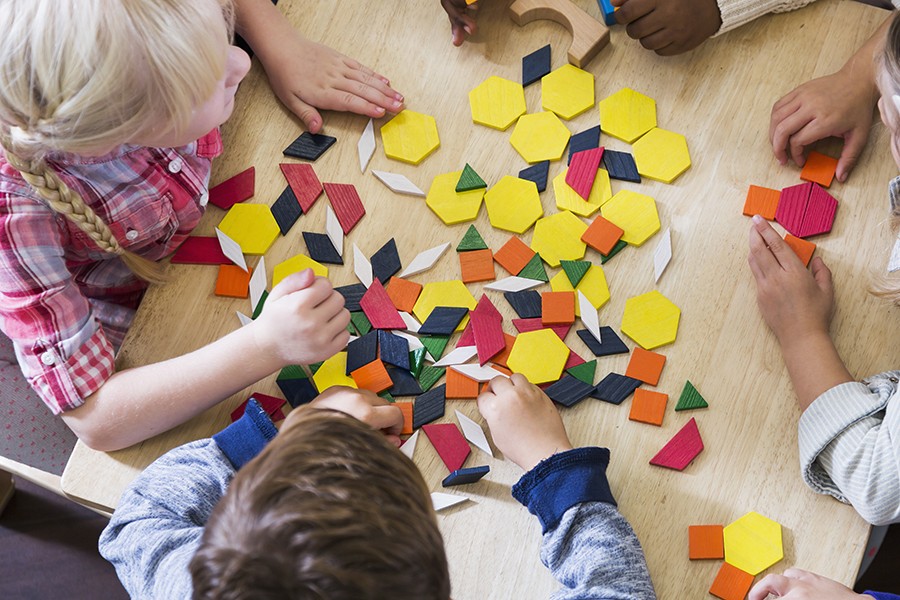Though scientists know children with strong spatial thinking skills have an edge in science, technology, engineering, and math, and that those skills are teachable, no one has formally infused them into a working elementary curriculum.
With a $1.4 million federal grant, Johns Hopkins University researchers will co-develop and test such a program for third-grade science classes.
The award from the Institute of Education Sciences, a branch of the U.S. Department of Education, will allow a team from the university's Science of Learning Institute to partner with Prince George's County Public Schools to create the curriculum and then test it with 400 students in the Maryland county, which is just outside of Washington, D.C.
The four-year project will begin immediately.
"We're taking a completely novel approach by incorporating spatial thinking tools into the district's current science curriculum," said Kelly Fisher, the study's co-principal investigator and executive director of the Science of Learning Institute. "We're thoughtfully augmenting the curriculum in a way that could have real impact but wouldn't cost the district much at all—that's pretty much unheard of."
Spatial thinking reflects the skills used to manage, reason about, manipulate, and organize spaces that are real or imagined, according to Kristin Gagnier, the study's co-principal investigator and outreach and evaluation specialist at the institute. People rely on spatial thinking skills to build a tower from blocks, gauge how much stuff can fit into the trunk of a car, to navigate a map, and to understand a graph, she says.
More than 50 years of research has shown that children with advanced spatial skills tend to be high achievers in science and math in school and to pursue STEM careers. But researchers have yet to see if it's possible to bolster children's spatial skills by teaching them in elementary school. According to Fisher, that's mainly because there's simply no room in a typical, jam-packed school day for a lesson dedicated to spatial thinking.
"Teachers have enough pressure to get through the basic subjects that children are tested on with limited time and resources," she said.
So through the grant, the team will weave spatial thinking tools into every aspect of the standard third-grade science curriculum—from earth and space science to engineering design. Students will learn the same lessons—but everything will be taught in ways designed to bolster the children's spatial thinking skills.
For example, students will be asked to do more sketching and visual comparisons of things they see. Teachers will explicitly show students how to interpret graphs. And when lecturing, teachers will gesture mindfully in ways that encourage students to analyze spatial elements like "top," "bottom," "left," and "right," and they will use precise language that further enforces those concepts.
During the first year, the team will create the spatialized curriculum.
In year two, researchers will present the curriculum to focus groups of Prince George's County teachers and refine it where necessary. The Prince George's district, where 62 percent of the children are eligible for free and reduced lunch and 90 percent are underrepresented minorities, represents a demographic underrepresented in STEM fields.
During the third year, teachers in four classrooms will try it, and based on the results, there could be further refinements. The curriculum will ultimately be tested in 20 classrooms, with about 400 students, during year four. Students in those classes, and another 400 students in classes being taught the traditional way, will be tested at the beginning and end of the school year.
If the project succeeds, the team believes the county will likely expand it to all third-grade classrooms and consider reworking the curriculum for other grades.
"If we find this has a positive impact, they could scale it up to the whole district," Fisher said. "What's really exciting is that what we're trying here will translate spatial thinking research into a practical educational program that can easily be rolled out to other schools."
The project team also includes Steven Holochwost, a research scientist at the institute and a principal at consulting firm WolfBrown; Godfrey Rangasammy, science supervisor at Prince George's County Public Schools; and Amy Shelton, director of research for the Johns Hopkins Center for Talented Youth and the associate dean for research in the School of Education.
Posted in Science+Technology, Politics+Society
Tagged education, stem, science of learning institute









